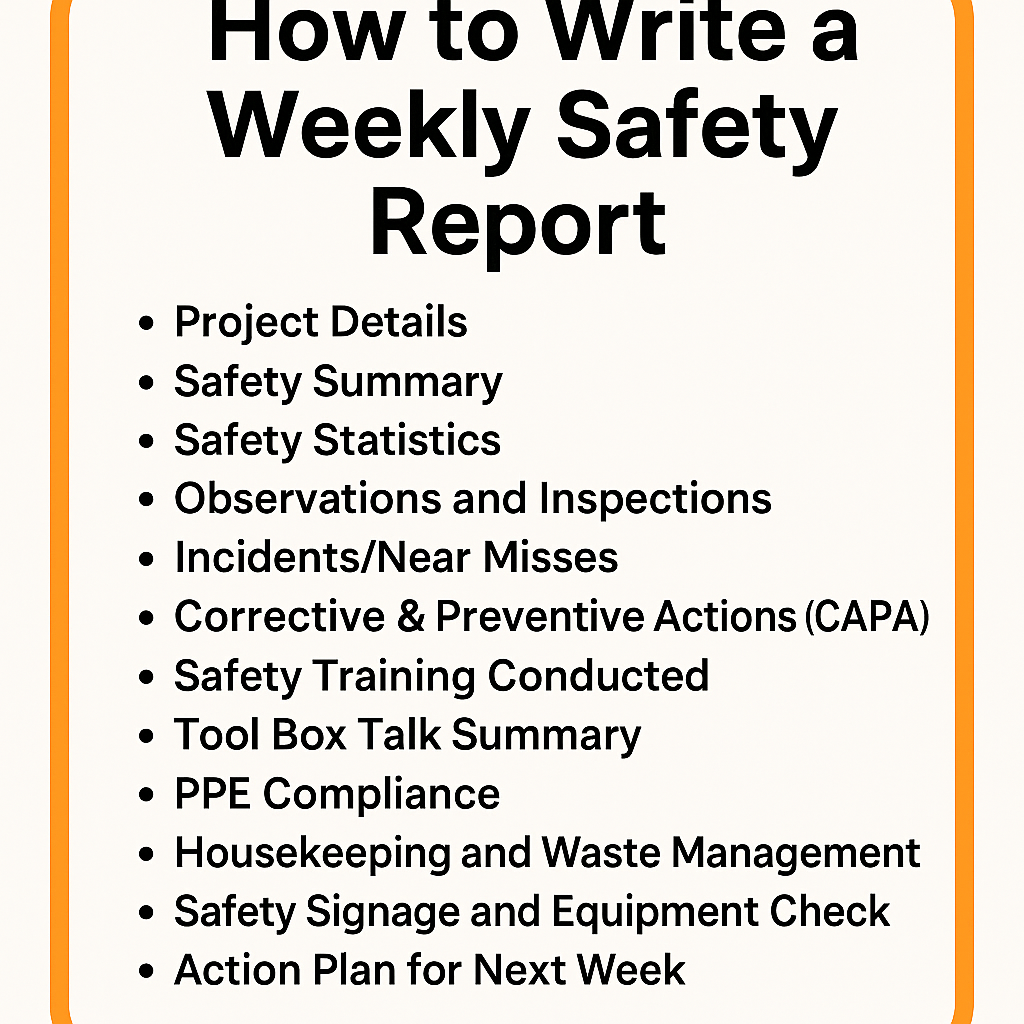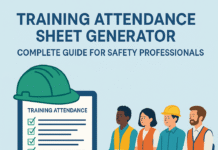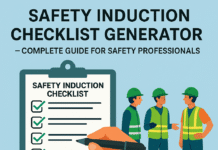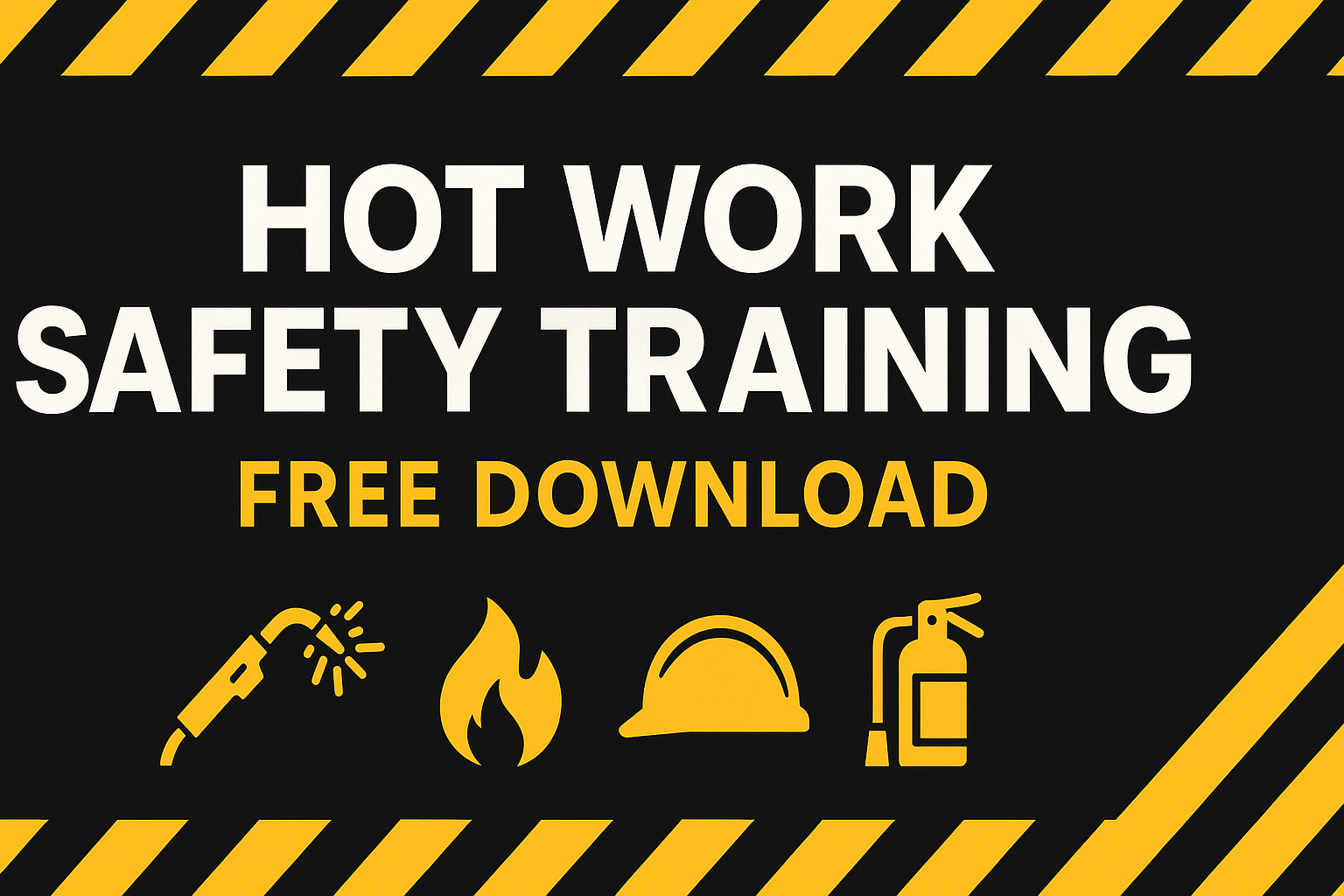
How to Write a Weekly Safety Report – A Complete Guide for Safety Officers
Writing a Weekly Safety Report is one of the most important responsibilities of a Safety Officer. This report not only reflects the site’s safety performance but also shows your proactive efforts in monitoring hazards, mitigating risks, and ensuring compliance.
A poorly written report can give the impression that safety is not being taken seriously. But a well-structured, data-driven, and concise safety report? That shows leadership, accountability, and professionalism.
In this article, you’ll learn step-by-step how to write a Weekly Safety Report, what to include, best practices, and even receive pro tips to make your reports stand out.
What is a Weekly Safety Report?
A Weekly Safety Report is a written summary of all safety-related activities, inspections, incidents, and recommendations for improvement that occurred within a specific week on a job site or facility.
Why is a Weekly Safety Report Important?
- Tracks ongoing hazards and trends
- Helps in reviewing safety compliance
- Provides transparency to management and clients
- Assists in audits and investigations
- Encourages continuous safety improvement
Before You Start Writing: Data Collection
Before writing, gather the following:
- Daily safety reports
- Inspection checklists
- Incident/near-miss logs
- Toolbox talk registers
- PPE compliance records
- Training attendance
- Photos and evidence
- Permit to Work (PTW) records
Keep all this information ready for accurate and complete reporting.
Structure of a Weekly Safety Report
Below is the ideal structure for a comprehensive report:
1. Project Details
- Project Name
- Location
- Reporting Period (Week)
- Prepared By
- Date of Submission
2. Safety Summary
A short paragraph summarizing:
- Overall site safety performance
- Any significant incidents or improvements
- Major findings or updates
3. Safety Statistics
Include:
- Total man-hours worked
- Number of workers
- Number of inspections conducted
- Toolbox talks conducted
- Safety training sessions
- Incidents, near misses, first aid cases, and lost-time injuries (LTIs)
4. Observations and Inspections
Highlight:
- Number of safety observations recorded
- Positive safety behaviors
- Unsafe acts or conditions
- Findings from site walk-throughs
Use bullet points for clarity.
5. Incidents/Near Misses
Detail:
- Any incidents reported
- Nature and cause
- Immediate actions taken
- Status of investigation
- Corrective actions initiated
Include photos or diagrams if necessary.
6. Corrective & Preventive Actions (CAPA)
Mention:
- Issues identified in previous week
- Corrective measures completed
- Outstanding actions with deadlines
Track CAPA status weekly to ensure closure.
7. Safety Training Conducted
Mention:
- Topics covered
- Dates and durations
- Number of participants
- Departments or subcontractors involved
Attach attendance sheets if applicable.
8. Tool Box Talk Summary
- Topics discussed
- Daily focus areas
- Attendance percentage
- Common worker feedback or concerns
9. PPE Compliance
- General compliance level
- Deficiencies noted
- Actions taken (e.g., warning letters, new PPE issued)
10. Housekeeping and Waste Management
- Cleanliness of the site
- Waste disposal compliance
- Chemical storage
- Fire exit clearance
- Spillage control
11. Safety Signage and Equipment Check
- Condition of safety signs and barricades
- Fire extinguisher inspections
- First aid kit updates
- Emergency lights and alarms
12. Action Plan for Next Week
- Focus areas for improvement
- Targeted safety topics
- Planned training or inspections
- Responsible persons and due dates
Step-by-Step: How to Write the Report
- Start with a header – Include your company logo, report title, project name, and reporting week.
- Write the executive summary – Mention the general safety status and any highlights.
- Input statistics – Use tables for incidents, near misses, and other data.
- Detail observations – Be objective and include both good and bad findings.
- Add photos and evidence – Visuals improve clarity and credibility.
- Summarize training and toolbox sessions – Include participant numbers.
- Review previous week’s action items – Note progress and pending items.
- Write a forward-looking action plan – Propose improvements or focus areas.
- Proofread and review – Check spelling, grammar, and accuracy of data.
- Submit on time – Send it to the Safety Manager, Project Manager, or Client.
Pro Tips to Make Your Safety Report Effective
- Be honest – Never hide incidents or violations.
- Be specific – “Poor housekeeping in welding bay” is better than “bad condition”.
- Use numbers – They speak louder than words.
- Be visual – Add charts, graphs, and photos.
- Avoid jargon – Use simple, clear language.
- Review and reflect – Mention lessons learned and areas of improvement.
Sample Template Overview
WEEKLY SAFETY REPORT
Project: ABC Tower Construction
Reporting Week: 17–23 June 2025
Prepared By: Mahendra Lanjewar
Designation: Safety Officer
1. Weekly Summary
2. Statistics Table
3. Observations & Findings
4. Incident Summary
5. Toolbox Talks Summary
6. Training Conducted
7. PPE Compliance Report
8. Housekeeping Review
9. Equipment Inspection Summary
10. Action Plan for Next Week
Attachments:
- Site photos
- Attendance sheets
- Inspection checklist
- Incident report
Conclusion
Writing a Weekly Safety Report isn’t just about filling a template—it’s about capturing the true safety performance of your site. When done correctly, it can improve communication, reduce risks, and build a culture of accountability. As a Safety Officer, treat this report as your weekly signature on site safety.
It’s not just paperwork—it’s proof of your commitment to protecting lives.
Monthly Safety Report: What Should a Safety Officer Do on a Monthly Basis
Weekly Safety Report: What Should a Safety Officer Do on a Weekly Basis
Daily Safety Report: What Should You Do on a Daily Basis as a Safety Officer
Onsite Emergency Plan under Factories Act, 1948
Off-Site Emergency Plan | Free Download
FAQs
Q1: Who should the weekly safety report be submitted to?
Typically, it’s submitted to the Safety Manager, Project Manager, or Client Representative.
Q2: How long should the report be?
2–4 pages is ideal. Be concise but comprehensive.
Q3: Can the same report format be used every week?
Yes, but the content must be updated accurately with real-time data.
Q4: Is it necessary to include photos?
Yes. Photos enhance report quality and help visualize issues or improvements.
Q5: What if nothing significant happened during the week?
Still write the report. Highlight safety compliance, good practices, and inspections done.
























